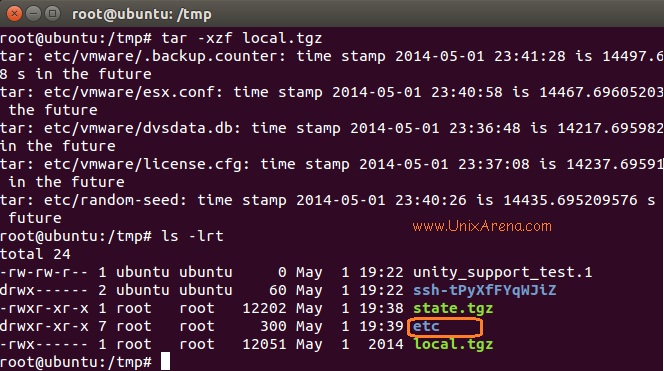

#UNTAR TO DIRECTORY HOW TO#
The codes below will demonstrate how to untar files with Golang.įlag.Parse() // get the arguments from command lineįmt.Println("Usage : go-untar sourcefile.tar") Since this tutorial focus on is on Golang, we will explore how to untar the compressed tar ball with Golang. v: This option will list all of the files one by one in the archive.

The options are pretty straightforward for this: x: This tells tar to extract the files. The 'traditional' way is to untar the files with shell scripts and then process the untarred files. tgz) If your tar file is compressed using a gZip compressor, use this command: tar xvzf. There are times when a program sitting on one server will receive tar balls from another or multiple servers.
#UNTAR TO DIRECTORY ARCHIVE#
Having that security is something we all need.Many system administrators like to use the tar program to archive the entire directory and gzip to compress newly created tar ball for backup purpose or FTP to another server for batch processing purpose. It’s always safer to make a backup of a file or directory before making changes, in case you need to revert to the original setup. As a system administrator, I created plenty of backups and recovered from some of them, too. tar.tbz file in Linux : This command will extract or untar multiple files from the tar, tar.gz and tar.bz2 archive file. Tar is useful in several different cases. tar xvfj file.tar or tar xvfj file.tar -C path of file in directory. If tar is not installed, you can do so depending on your operating system.

It allows you to create the archive and manage it easily with the available tools in your terminal. Tar has a lot of things you can do with it. #zcat | grep Įgrep is a great one to use just for regular file types. This shows the content of the archive, then pipes that output to a grep. In this example, we use pipes and greps to locate content. v - Verbose output Use pipes and greps to locate content To test the tar file content's integrity: #gunzip -c | tar t > /dev/null To test the gzip file is not corrupt: #gunzip -t In this example, we check the integrity of an existing tar archive. How to check the integrity of a tar.gz backup We are making 200MB backups from the /dir folder. In this example, the dir/ is the directory that you want to split the backup content from. # tar cvf - /dir | split -bytes=200MB - backup.tar You can pipe the tar command into the split command. In this example, we split the existing backup into smaller archived files. f - Name the file How to split a backup into smaller backups This allows you to add additional files to the pre-existing backup backup.tar. In this example, we add onto a backup backup.tar. f - Name the archive How to append or add files to a backup This is helpful in situations where you are trying to locate something but do not want to specify the name or want to add in all options matching that particular search. Wildcards allow you to select files without having a specific search for keywords. In this example, we use the wildcard option on a backup backup.tar. z - compressed gzip archive file How to use the wildcard option In this example, we list the contents from a gzip backup without extracting it. z - compressed gzip archive file How to list contents of a tar(.gz) backup In this example, we extract content from a gzip backup, specifically a file called file.txt from the directory /backup/directory in the gzip file. # tar -exclude file.txt -exclude file.sh -cvfz How to extract content from a tar (.gz) backup In this example, we create a gzip backup called, but exclude the files named file.txt and file.sh by using the -exclude option. z - Compressed gzip archive file How to exclude files when creating a tar backup

In this example, we create a gzip archive backup called of the directory /home/user. f - Name the archive How to create a tar.gz backup In this example, we create a backup called backup.tar of the directory /home/user. Also, the tarball is easily movable from one server to the next. This command is one of the most widely-used commands for this purpose. It compresses files and directories into an archive file, known as a tarball. Tar stands for tape archive and allows you to create backups using: tar, gzip, and bzip. The tar utility has a ton of options and available usage. It’s a common practice to complete and sometimes makes a difference in your finished work. In my personal experience, it has saved me more times than I can count. One of the key rules for working as a system administrator is always to make a backup. Linux system administration skills assessmentĮver try something, it didn’t work, and you didn’t make a backup first?.A guide to installing applications on Linux.
#UNTAR TO DIRECTORY DOWNLOAD#


 0 kommentar(er)
0 kommentar(er)
